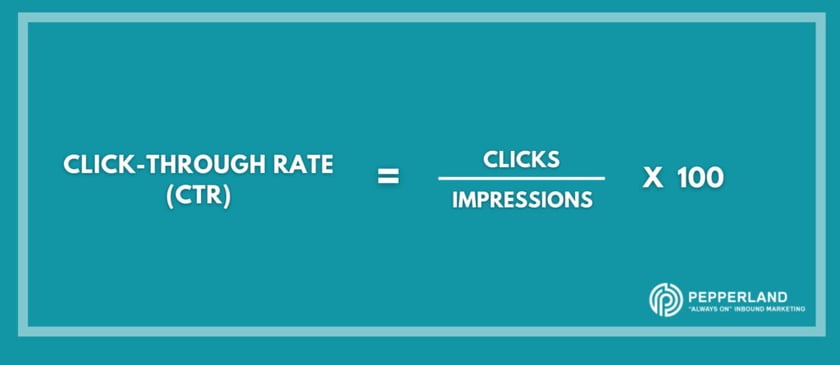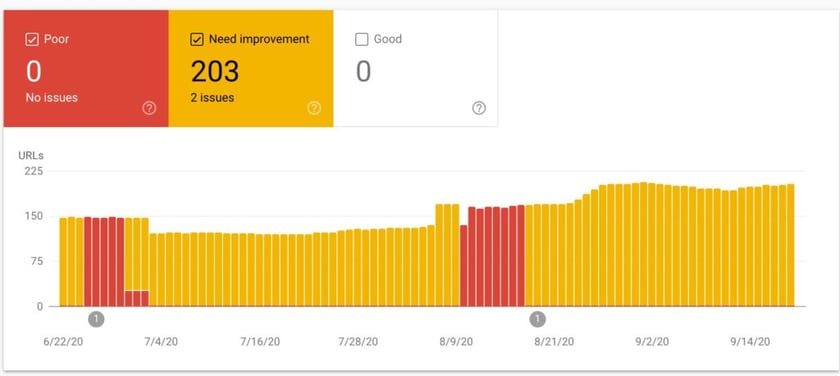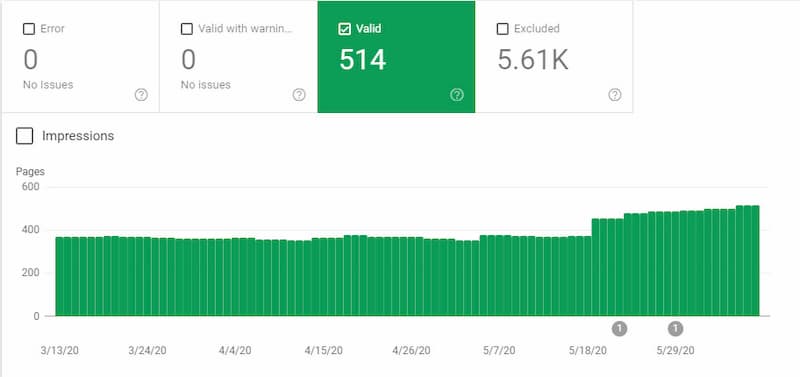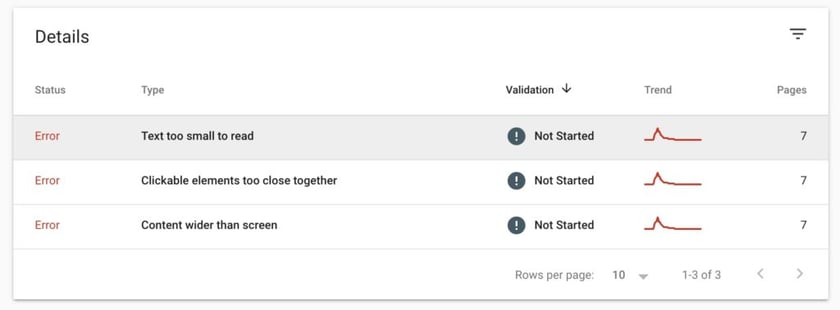Written By:
Kayley Blanchard
A strong Search Engine Optimization (SEO) strategy allows digital marketers to maximize their visibility in search results and ensure that the target audience is actually seeing their content. However, to achieve your SEO goals and find success, you need to first identify the appropriate KPIs that you would like to improve.
Here, we take a look at:
-
What KPIs are and why they’re important
-
The top SEO KPIs for your strategy and how to monitor them
According to a recent study by HubSpot, 75% of users never scroll past the first page of search results. That being said, it’s absolutely crucial that digital marketers optimize their website content to rank well in search results.
The results on the first page have been deemed highly valuable by search engine crawlers, meaning that they give searchers the information that they need while providing an excellent user experience. All of these results have something in common: they follow SEO best practices.
Pages that are full of errors and are not well-optimized for SEO will likely never see the first page of search results. You’ll want to have a comprehensive SEO strategy in place to ensure that your content ranks as highly as possible so that it actually reaches your target audience.
It can be tempting to jump right into optimizing your website after performing an SEO audit and identifying opportunities, but it’s important to put in the necessary work before implementing your SEO strategy.
Goal-setting is an important, yet often overlooked part of digital marketing and SEO. Before launching any SEO campaigns, you need to set SMART goals using the appropriate performance metrics so you know what it is that you’re trying to achieve. To set these goals and track your progress towards them, you’ll identify Key Performance Indicators (KPIs) that you would like to focus on.
Let’s take a closer look at what KPIs are and why they’re a critical piece of any successful SEO strategy.
What are KPIs and why are they important for SEO?
Key Performance Indicators (KPIs) are measurable values that gauge your performance against a specific goal.
KPIs reflect what your organization is trying to improve, and they indicate whether or not you’ve been successful in achieving your goals.
As a quick refresher, all organizational goals should be SMART goals, meaning that they are Specific, Measurable, Attainable, Relevant, and Time-bound. KPIs are a key component of SMART goals seeing that they tell you what exactly it is that you’re trying to accomplish. It’s virtually impossible to set effective goals without them.
By tracking KPIs for your SEO strategy, you’re able to determine the effectiveness of your efforts in real-time and see what is (and what isn’t) working. This allows you to adjust your strategy as needed so that you don’t waste valuable time on something that isn’t driving results for your organization.
The specific KPIs that you choose for your SEO efforts will vary based on your industry and specific business goals, but there are some KPIs that all digital marketers should be tracking to guarantee success.
9 SEO KPIs That You Should Be Tracking
1. Organic Traffic
Organic Traffic refers to the visitors who navigated to your website after clicking on an unpaid search result.
While you might be interested in tracking paid traffic if you’re overseeing a PPC campaign for your organization, Organic Traffic is better suited to monitor the impact of your SEO efforts.
This metric tells you whether your website is visible in organic search results, which ties back to the overall goal of your SEO strategy. You can track this metric to determine the effectiveness of your SEO efforts and adjust your strategy as needed so that you hit your website traffic goals.
It’s also important to regularly monitor Organic Traffic so that you can identify and resolve any critical website issues as soon as possible. If you notice a significant dip in your website traffic, this could very well be the direct result of Google coming across crawl errors, or other critical issues, on your website.
To measure Organic Traffic, simply verify your domain if you have not done so already and log in to your Google Analytics account.
2. Click-through Rate (CTR)
Click-through rate, or CTR, refers to the number of searchers who clicked on a search engine result in comparison to how many times the result was viewed in the SERP.
While CTR is typically associated with pay-per-click advertising, CTR is also immensely valuable for SEO as it tells you whether your metadata is descriptive and enticing enough to encourage searchers to visit your website.
If searchers are seeing your website in the SERP but are not clicking-through, this might be representative of issues with your metadata for the specific page. Also, Google will truncate your metadata if it exceeds a certain character limit. If this happens, searchers won’t be able to see your full title tags or meta descriptions, so they won’t have a good understanding of what the page is about.
To improve your organic CTR, you’ll want to optimize your title tags and meta descriptions for search results. Aim to keep your title tags under 60 characters and your meta descriptions under 150 characters. Also, be sure to write descriptive and compelling meta descriptions that include a call-to-action.
How to Calculate Click-through Rate (CTR):

To calculate CTR, divide the number of clicks by the number of impressions, and multiply by 100. You’ll also find CTR calculated for you within your Google Search Console account.
Download the S.M.A.R.T. Marketing Goals Template
An easy-to-use, free spreadsheet template with step-by-step instructions.

3. Bounce Rate
Your Bounce Rate represents the percentage of website visitors who enter your site and promptly leave instead of continuing on to visit other pages.
Essentially, this tells you whether the searcher found what they were looking for when they clicked on your content in the SERP. If they found your website to be valuable, it’s likely that they’ll spend some time exploring your website further.
In the context of SEO, a very high Bounce Rate communicates a few important issues. Perhaps your metadata was misleading or not well-aligned with the purpose of the page; in this case, the user is likely to navigate away from your website immediately.
Also, if you notice that a specific page suddenly has an extremely high bounce rate, this could be representative of an on-page error or issue that might be contributing to a poor user experience.
To find your website’s bounce rate, navigate to the Audience Overview in Google Analytics.
4. Page Load Time
The time it takes for a page to load on your website is an extremely important metric for SEO.
Search engine crawlers and users alike will respond poorly to pages that take too long to load or become responsive. Google maintains that website speed is one of the signals that its algorithm uses to rank pages in search results.
In addition to poor rankings, slow page speed is frustrating for users who can simply navigate to a different, faster website for the information that they need. Long Page Load Times directly contribute to higher Bounce Rates.
To identify any pages on your website that are particularly slow, you can navigate to the Core Web Vitals report in Google Search Console. Here, you’ll see pages that score poorly in loading performance, interactivity, and visual stability. Look for any pages that are classified as “Poor” or “Need improvement.”

5. Keyword Rankings
To monitor the effectiveness of your SEO efforts, you’ll want to keep tabs on any changes in keyword rankings for your website.
Seeing that the purpose of SEO is to get your website to rank higher in search results, your keyword rankings are a direct reflection of how well your SEO strategy is performing. You’ll want to regularly monitor any fluctuations in your rankings for your organization’s targeted keywords.
An increase or decrease in rankings can also predict future performance for some of your other SEO KPIs, like Organic Traffic. If your rankings drop, it’s likely that your Organic Traffic will decrease, and vice versa.
While some fluctuations in rankings are normal, it’s wise to keep an eye out for any major drops in rankings because this could indicate a deeper problem with your website or stolen rankings from competitors.
To track changes in your keyword rankings, we recommend a tool like the Ahrefs Rank Tracker.
![]()
6. Backlinks
Authoritative, high-ranking websites typically have a strong backlink profile, meaning that other domains link to their website content.
When many sites link to the same website or page, this tells search engines that the content is valuable. Essentially, the more links that a specific page has from other quality domains, the more important search engines consider the page to be, and the higher it will rank.
The number of links that a website or page receives has direct implications on SEO since websites with a stronger backlink profile tend to rank higher than those without.
To monitor the number of backlinks that your website is receiving, we recommend either the SEMrush Backlink Analytics tool or the Ahrefs Site Explorer.
7. Indexed Pages
As you implement your SEO strategy, it’s important that you routinely observe any fluctuations in your website’s number of Indexed Pages.
To maintain the health of your website, you’ll want to ensure that the pages you’re telling Google to index are actually indexed, and the pages that shouldn’t be indexed are not. Search engines, like Google, take your indexation directives as suggestions, so it is possible to find misalignment between the pages that you want to be indexed and the pages that are.
By monitoring any changes in your number of Indexed Pages, you’ll be able to quickly catch any indexing issues that might negatively impact SEO, like issues with your sitemap or robots.txt files.
This information can be found in the Index Coverage report within Google Search Console.

8. Crawl Errors
It’s absolutely critical that you’re aware of the number of Crawl Errors on your website as they appear.
For all of your SEO efforts to be worthwhile, search engine crawlers, like Googlebot, need to be able to see all of your website content. When Googlebot has issues reading the content on your site, this can trigger specific crawl issues that can negatively impact SEO by decreasing your search result rankings and damaging your domain authority.
Not only do crawl errors negatively impact SEO, but they also have the potential to make either your entire website or specific pages inaccessible to visitors. This lends itself to a horrible user experience.
Google divides crawl errors into two categories: site errors and URL errors. Site errors mean that your entire website could not be crawled, while URL issues refer to specific pages. Regardless of the category, it’s crucial that you look out for Crawl Errors on your website so you can fix them immediately.
To determine whether there are any Crawl Issues on your site, navigate to the Index Coverage Report in Google Search Console, and click the “Errors” tab.

9. Mobile Usability
Although Mobile Usability refers to multiple KPIs grouped together as opposed to a single metric, this group of metrics should always be a key component of every SEO campaign.
Mobile traffic accounts for approximately half of the total web traffic worldwide, yet so many marketers overlook the importance of optimizing for mobile. Google also crawls pages with mobile-first indexing, meaning that the mobile version of the content is used for indexing and ranking. If your website is not well-optimized for mobile use, your SEO strategy is going to fall flat.
Seeing that mobile SEO is just as important as desktop SEO, to measure the success of your SEO strategy, you also need to consider Mobile Usability. This will ensure that users continue to have the best possible user experience.
The Mobile Usability Report within Google Search Console allows you to monitor any pages on your website that have usability issues when viewed on a mobile device.

Driving Results With KPIs
These are just a few of the countless SEO KPIs that exist. Choose the metrics that make the most sense for your organization and use them to develop SMART goals for your SEO strategy.
To track your progress toward your goals, we recommend that you integrate your Google Analytics and Google Search Console accounts with a tool like Databox to automatically track any movements in your KPIs with a customizable dashboard.
By identifying the appropriate KPIs for your SEO strategy, setting clear goals, and monitoring your progress, your SEO efforts are more likely to be successful and profitable for your organization.
Download our free SMART goal-setting template to set your SEO goals using the KPIs that you’ve selected.







